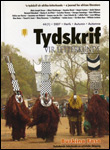The Semeiotic of Africanicity in Gaston Kaboré’s film Buud Yam
DOI:
https://doi.org/10.4314/tvl.v44i1.29781Keywords:
Africanicity, black cinemas, cultural ideologies, conjunctural articulationAbstract
The film Buud Yam (Gaston Kaboré, 1997) articulates a discursive character suitable for illustrating a semiotics of “Africanicity” in black African cinemas. Through the triadic relation of the signs proposed by Charles S. Peirce and the conjunctural articulation suggested by Stuart Hall, this article wants to unpack the discursive modality of the scriptural articulation, recurrent in Black African cinema. With this methodology, the author illustrates a semiotics overloaded with cultural ideologies that uses the body of the Africans as a transnational vehicle from where materializes the political condition of possibility of Africanicity, as an oppositional expression to the nationalist frameworks and the nationalism paradigms.
Downloads
References
...
Downloads
Published
Issue
Section
License
Copyright (c) 2019 Tydskrif vir Letterkunde

This work is licensed under a Creative Commons Attribution-ShareAlike 4.0 International License.


 https://orcid.org/0000-0001-6465-6584
https://orcid.org/0000-0001-6465-6584


.png)